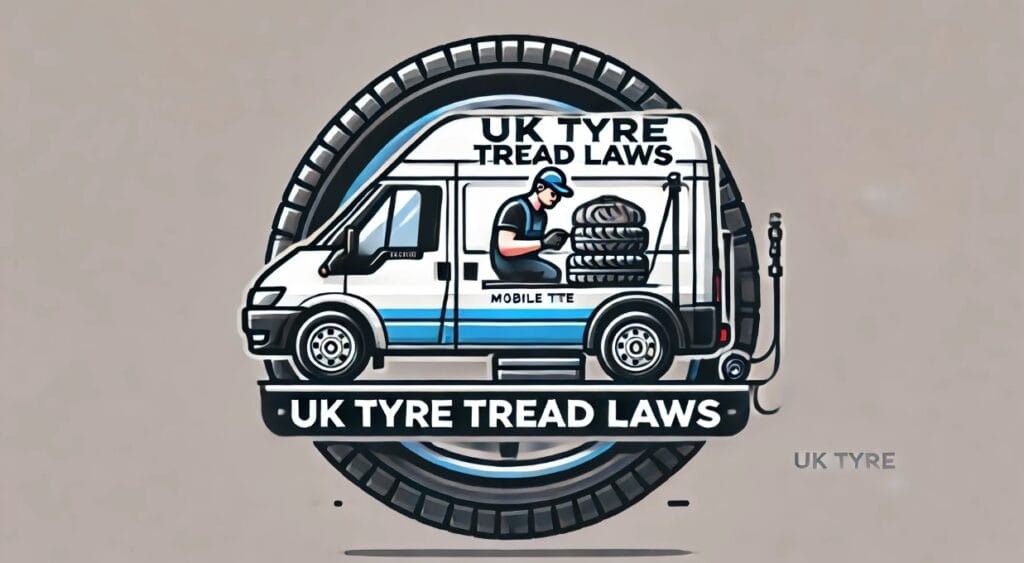UK Tyre Tread Laws: What Are the Legal Tyre Tread Depth Requirements?

Driving with worn tyres isn’t just risky—it’s illegal. Every year, thousands of UK drivers unknowingly fail MOT tests or receive fines due to illegal tyre tread depth. This guide covers everything you need to know about tyre tread depth laws, inspection tips, and staying compliant with UK road regulations.
Understanding the Legal Requirement
What Is the Legal Tyre Tread Depth in the UK?
The legal minimum tyre tread depth in the UK is 1.6mm. This must be consistent across:
-
The central three-quarters of the tyre width
-
The entire circumference of the tyre
This regulation is part of the Road Vehicles (Construction and Use) Regulations 1986. Driving with tyres below this limit is considered illegal and dangerous.
Penalties for non-compliance:
-
Up to £2,500 fine per tyre
-
3 penalty points per tyre
-
Possible driving disqualification for multiple offences
Why Tread Depth Matters
Tyre tread depth directly affects your vehicle’s:
-
Braking distance
-
Road grip, especially on wet surfaces
-
Fuel efficiency
-
Overall safety
Tyres worn below 1.6mm are less effective at dispersing water, increasing the risk of aquaplaning.
For more info contact tyrevortex.com
How to Check Tyre Tread Depth
The 20p Test (UK Standard)
Insert a 20p coin into the main grooves of your tyre. If the outer rim of the coin is visible, your tread is below 1.6mm and needs replacing.
Use a Tread Depth Gauge
A tyre tread depth gauge is an affordable and accurate tool to measure tread in millimetres.
Look for Tread Wear Indicators
Modern tyres include small rubber bars inside the tread grooves. If they are level with the tread surface, it’s time to replace the tyre.
MOT Tyre Tread Depth Requirements
During an MOT test, tyres are inspected for:
-
Minimum tread depth (must be at least 1.6mm)
-
Sidewall damage or bulges
-
Cracks, embedded objects, or punctures
-
Uneven or irregular wear
If any tyre fails these checks, your vehicle will fail the MOT.
Legal Tread Depth Requirements by Vehicle Type
| Vehicle Type | Legal Tread Depth | Notes |
|---|---|---|
| Cars and vans | 1.6mm | Across central ¾ and entire circumference |
| Motorcycles over 50cc | 1.0mm | Centre ¾ of tread pattern |
| Mopeds and smaller bikes | Visible tread pattern | No depth requirement, but must not be smooth |
| Trailers and caravans | 1.6mm | Same rules as passenger vehicles |
UK Driving Laws on Tyre Maintenance
Drivers are legally responsible for ensuring their tyres meet road safety standards. This includes:
-
Monthly tread depth checks
-
Ensuring tyres are inflated to the correct pressure
-
Checking for visible damage or irregular wear
-
Replacing tyres when worn, not just at MOT time
Driving with unsafe tyres may lead to insurance invalidation in the event of an accident.
When Should You Replace Your Tyres?
Although 1.6mm is the legal minimum, most tyre experts recommend replacing tyres at 3mm tread depth for better safety and performance. Worn tyres compromise grip, especially in wet conditions.
For more info about Tyre Change Take at TyreVortex
Signs Your Tyres Need Replacing
-
Less than 3mm tread depth
-
Uneven wear patterns
-
Vibration or pulling while driving
-
Cuts, bulges, or cracks in the sidewall
Tyre Tread Law: Real-World Example
In 2023, a UK driver was fined £10,000 and received 12 penalty points for driving with four illegal tyres, all worn below the legal tread depth. This highlights the importance of regular inspections and compliance with legal tyre requirements.
Best Practices to Stay Compliant
-
Check tyre tread depth once a month
-
Use a tread gauge or 20p test
-
Inspect tyres before long journeys
-
Replace tyres in pairs or all four for balanced handling
-
Monitor tyre wear indicators built into your tyres
FAQs: UK Tyre Tread Laws
1. What is the legal tread depth for tyres in the UK?
The legal minimum tread depth is 1.6mm across the central ¾ of the tyre and around its full circumference.
2. Can tyres under 1.6mm pass the MOT?
No. Any tyre below the legal limit will cause an MOT failure.
3. Is it illegal to drive with worn tyres?
Yes. Driving with tyres below the legal tread depth can result in a fine, penalty points, and possible prosecution.
4. Are front and rear tyres treated the same under the law?
Yes. All tyres must meet the same legal tread requirements.
5. How can I measure my tread depth accurately?
Use a tyre tread depth gauge or the 20p coin test to check if your tyres are legal and safe.
Final Thoughts
Knowing and following the UK legal tyre tread depth requirement isn’t just about passing your MOT—it’s about ensuring safety on every journey. Regularly inspect your tyres and replace them before they hit the minimum legal limit. It’s a small step that can prevent major problems.